|
Posted on 02/25/2004 12:01:38 AM PST by SAMWolf
|
|
 are acknowledged, affirmed and commemorated.
|

| Our Mission: The FReeper Foxhole is dedicated to Veterans of our Nation's military forces and to others who are affected in their relationships with Veterans.
Where the Freeper Foxhole introduces a different veteran each Wednesday. The "ordinary" Soldier, Sailor, Airman or Marine who participated in the events in our Country's history. We hope to present events as seen through their eyes. To give you a glimpse into the life of those who sacrificed for all of us - Our Veterans.
|
|
More Famous Flag-Raising On Iwo Jima Shortly after the first flag-raising on Mount Suribachi, Iwo Jima, Lieutenant Colonel Chandler W. Johnson, the Battalion commander, told Second Lieutenant Albert T. Tuttle, Assistant Operations Officer, 2d Battalion, 28th Marines, to go down to one of the ships on the beach and get a large battle flag - "large enough that the men at the other end of the island can see it. It will lift their spirits also." Lieutenant Tuttle went on board LST 779, beached near the base of the volcano and obtained a larger set of colors. Ironically, the flag from LST 779 which would soon fly over the first captured Japanese territory had been salvaged from Pearl Harbor, probably from some decommissioned destroyer or destroyer escort.  This is the original photograph by Joe Rosenthal. It was later cropped to become the photo we all know. When Tuttle returned to the command post with the larger flag. Lieutenant Colonel Johnson directed him to give the flag to Private First Class Rene A. Gagnon, the Colonel's runner from Company E. Gagnon was headed up the hill with replacement batteries that Lieutenant Schrier had requested for his radio. As Gagnon was carrying this second and larger (96 by 56 inches) flag up the slopes of Suribachi, Associated Press photographer Joe Rosenthal was just beginning his hard climb up the mountain. Sergeant Michael Strank, Corporal Harlon H. Block, Private First Class Franklin R. Sousley and Private First Class Ira H. Hayes also accompanied this set of colors up Suribachi's slopes with Gagnon. When the men arrived at the top, Lieutenant Schrier decided that the new flag should be raised as the original one was lowered. Sergeant Strank, Corporal Block, Private First Class Hayes and Private First Class Sousley fastened the larger colors to a second pipe and then tried to set the makeshift staff in the rugged ground. Since the four men appeared to be having difficulty in getting the pipe firmly planted, two onlookers, Private First Class Gagnon and Pharmacist's Mate Second Class John H. Bradley came to their aid.  Easy Company take the flags up Mt. Suribachi. Easy Company had been fighting 4 days. They had 40% casualties to date All six were struggling to raise the flag when Rosenthal snapped a picture of the scene. According to Rosenthal, luck played an important part in the taking of his famous photograph. The Associated Press photographer arrived at the summit just as Lieutenant Schrier was preparing to take down the first flag. At first, Rosenthal hoped to photograph the lowering of the first flag together with the raising of the larger flag. When he discovered that he would not have time to line up both pictures, he decided to concentrate on the second flag raising. He backed off about 35 feet, only to discover that because of the sloping ground, he could not see what was happening. He piled up some loose stones, mounted them and focused on the band of Marines. Just as Rosenthal was training his camera on the men, Lieutenant Schrier walked into his line of vision. Rosenthal later recalled that just as Schrier moved away, Sergeant Bill Genaust, the Marine motion picture photographer, "came across in front of me and over to my right...He said 'I'm not in your way, am I, Joe?' And I said, 'Oh, no." I turned from him and out of the corner of my eye I said, 'Hey Bill, there it goes!' By being polite to each other we damn near missed the shot. I swung my camera around and held it until I could guess that this was the peak of the action and shot."  Joe Rosenthal Rosenthal took 18 photographs on Iwo Jima that eventful day. Among them was a shot posed by men of the 28th Marines around the flag. When queried a few days later by his wire service picture editor as to whether "the flag raising picture" was posed, Rosenthal, unaware of which picture had had the sensational reception in the United States, thought the editor meant the one which actually had been posed. Out of Rosenthal's affirmative reply to the editor grew the misconception that the flag raising picture was posed. The testimony of Rosenthal himself and of eyewitnesses who survived the battle, however, attest that the flag raising photograph was in no way rigged. As Rosenthal put it, "Had I posed that shot, I would, of course, had ruined it. I'd have picked fewer men...I would also have made them turn their heads so that they could be identified for AP members throughout the country and nothing like the existing picture would have resulted."  Four of the Flag Raisers (Bradley, Hayes, Sousley & Strank) appear with their jubilant buddies. Strank, Sousley and many of these boys would soon be dead. As it was, "the photo" became perhaps the most famous single photograph ever taken. It won:
 and on a U.S. postage stamp.  And it was forever immortalized in the largest bronze statue in the world - the Marine Corps War Memorial in Arlington, Virginia, dedicated by President Dwight D. Eisenhower on 10 November 1954, the 179th anniversary of the Marine Corps.  The popularity of Joe Rosenthal's photograph of the Iwo Jima flag raising caused Brigadier General Robert L. Denig, Director of the Marine Corps Division of Public Information, to try to learn the identity of the six flag raisers. Nor was General Denig the only person interested in learning the names of these men. President Franklin D. Roosevelt requested that the six Marines be located and returned to the United States. The President felt that the safe return of the flag raisers would prove a boon to national morale.  Here's Rosenthal snapping a posed shot minutes after the second flag raising First of the flag raisers to return was Private First Class Rene A. Gagnon. Using an enlargement of the Rosenthal photo, he identified Sergeant Michael Strank, Private First Class Franklin R. Sousley, both of whom had been killed in action, and Pharmacist's Mate Second Class John H, Bradley. He also numbered among the flag raisers Sergeant Henry O. Hansen, who was subsequently killed during the Iwo operation. A year passed before Gagnon realized that the Marine he had believed to be Hansen actually was another victim of the fight on Iwo Jima - Corporal Harlon Block. Ironically, Hansen had taken part in the earlier, less celebrated flag raising on Iwo Jima and was killed by a sniper a few days later while being treated for wounds by Pharmacist's Mate Bradley. Gagnon at first refused to give the name of the sixth flag raiser. He insisted that he had promised to keep the man's name a secret. Finally, Gagnon revealed that the man was Private First Class Ira H. Hayes.  Mt. Suribachi, the 550-foot volcanic cone at the islands southern tip, dominates both possible landing beaches. From here, Japanese gunners zeroed in on every inch of the landing beach. Blockhouses and pillboxes flanked the landing areas. Within, more heavy weapons stood ready to blast the attacking Marines. Machine guns criss-crossed the beaches with deadly interlocking fire. Rockets, anti-boat and anti-tank guns were also trained on the beaches. Every Marine, everywhere on the island was always in range of Japanese guns. Bradley, who had been wounded on 12 March 1945, was ordered back to the United States and participated with Hayes and Gagnon in a war bond drive. Because of the haste with which their bond-selling tour was organized, none of the surviving flag raisers seemed to have had time to examine closely the Rosenthal picture. At any rate, Hayes did not mention his doubts concerning the identity of any of the deceased flag raisers until the winter of 1946. He then claimed that the person at the base of the flagstaff was Corporal Harlon Block. An investigation proved him correct and the list of flag raisers was altered. The Iwo Jima flag raisers, as shown in the Rosenthal photograph left to right, are:  "The strength to persist, the courage to endure."
|
|
Air Power |
The Lightning designed by Lockheed engineer Clarence "Kelly" Johnson and his team of designers, represented one of the most radical departures from tradition in American fighter development. The Lightning was a complete break-away from conventional airframe design, power, and at long last, armament. Not only did it have twice the power and almost twice the size of its predecessors, but with no less than four .50 cal. machine guns plus a 20 mm cannon, the P-38 had enough firepower to sink a ship--and sometimes did. Concentrated in the central fuselage pod, the guns fired parallel which eliminated a need for a propeller synchronizer.
The Lightning tricycle landing gear and twin-boom configuration completed the list of major deviations from what might he considered conventional Army fighters. In this respect, it was very unusual that the Lightning design progressed beyond the testing stage; such radical concepts seldom achieved production status. But the simple fact was that the P-38 design worked and the Army seemed to have found its dream plane in this 400 mph fighter.
The XP-38, 37-457, was built under tight secrecy and made its maiden flight on January 27, 1939, with Air Corps test pilot and P-38 project officer, Lt. Benjamin S. Kelsey, at the controls. The P-38's performance justified Lockheed's investment of nearly $6,000,000 of its own funds to complete the prototype. The Army was so delighted with the big new fighter, it lifted the wraps of secrecy from the plane for a transcontinental speed dash on February 11, 1939. This event was marred by a crash when Kelsey undershot the runway at Mitchell Field, NY. Kelsey survived the crash and remained an important part of the Lightning program. The airplane was written off, but Lockheed received a contract for thirteen YP-38s along with the usual list of improvements.
The XP-38 had been powered by two liquid cooled, Allison V-1710 engines turning 11 1/2 foot Curtiss Electric, inward turning, counter-rotating propellers. With the YP-38s and all subsequent Lightings, the propellers rotated outward negating torque when both engines were operating (A batch ordered by Britain did not have counter-rotating propellers.) One XP-38A was built with a pressurized cabin. Armament on the YPs was altered by replacement of two of the .50s with .30s, and the 20 mm cannon gave way to a 37 mm. But even before the YP-38s were completed, the original machine gun arrangement was standardized for production types. The first production order was 35 P-38Ds, followed by 210 P-3XEs which reverted back to the 20 mm cannon. These planes began to arrive in October 1941, just before America entered World War II. With the P-38D came self sealing fuel tanks and armor protection for the pilot. The Lightning was ready for war!
A major problem surfaced with the loss of control in a dive caused by aerodynamic compressibility. During late spring 1941, Air Corps Major Signa A. Gilke encountered serious trouble while diving his Lightning at high-speed from an altitude of 30,000 ft (9,120 m). When he reached an indicated airspeed of about 320 mph (515 kph), the airplane's tail began to shake violently and the nose dropped until the dive was almost vertical. Signa recovered and landed safely and the tail buffet problem was soon resolved after Lockheed installed new fillets to improve airflow where the cockpit gondola joined the wing center section. Seventeen months passed before engineers began to determine what caused the Lightning's nose to drop. They tested a scale model P-38 in the Ames Laboratory wind tunnel operated by the NACA (National Advisory Committee for Aeronautics) and found that shock waves formed when airflow over the wing reached transonic speeds and became turbulent. Lockheed never remedied this problem but the firm did install dive recovery flaps under each wing in 1944 to restore lift and smooth the airflow enough to maintain control when diving at high-speed
The fastest of the Lightnings was the P-38J with a top speed of 420 mph, and the version produced in the greatest quantity was the "L", of which 3,735 were built by Lockheed and 113 by Vultee. The P-38L was powered by two 1,475 hp Allison V1710-111 engines. As with any long-term production aircraft, the P-38 underwent many modifications. The P-38J intakes under the engines were enlarged to house core-type intercoolers. The curved windscreen was replaced by a flat panel, and the boom mounted radiators were enlarged. Some were fitted with bombardier type noses, and were used to lead formations of bomb-laden P-38s to their targets. The P-38M was a two-seat radar-equipped night fighter, a few of which had become operational before the war ended. One interesting variation had an elevated tail assembly on upswept booms; another one had an elongated center pod and was used for airfoil evaluation.
The dimensions of the P-38 remained the same throughout production, its wing spanning 52 feet with an area of 328 square feet. overall length was 37 feet 10 inches; height was 12 feet 10 inches. The P-38L weighed 12,800 pounds empty and 17,500 pounds gross. Thus, the P-38 was the largest, heaviest, and fastest "P" type to date. An internal fuel capacity of 410 gallons could be increased to 1,010 gallons with two external drop tanks and gave the Lightning a range of 450 miles, making it the first fighter suitable as a long-range bomber escort. In addition to its devastating nose armament, the P-38 could carry up to 4,000 pounds of external weapons including bombs and rockets.
Specifications:
Primary Function: Pursuit (fighter)
Contractor: Lockheed
Crew: One
Unit Cost: $115,000
Powerplants: Two Allison V-1710-111/113 of 1,475 hp. ea.
Dimensions:
Length: 37 ft 10 in
Wingspan: 52 ft
Height: 12 ft 10 in
Weights: Gross: 15,340 lb / Loaded: 17,500 lb
Performance :
Speed: 414 mph
Ceiling: 40,000 ft
Range: 1,100 miles
Armaments:
Four .50-cal. machine guns and one 20mm cannon.
External bomb load of 4,000 lbs. or ten 5 in. rockets.
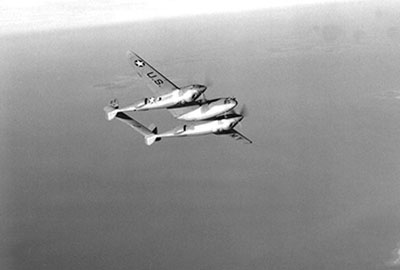



All photos Copyright of Global Aircraft.Org
| .......................Lockheed P-38 Lightning | |
|---|---|
| USA | |
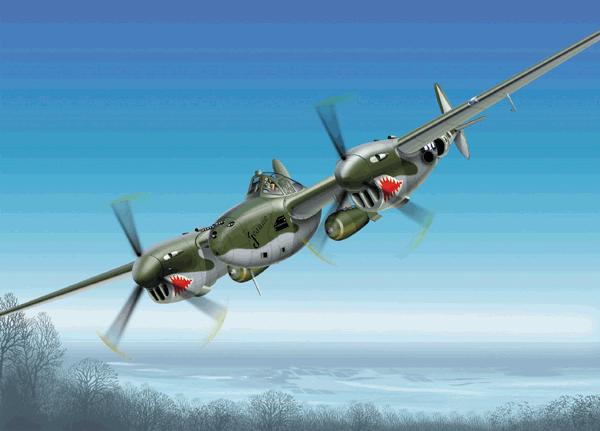 |
|
| The P-38 Lightning introduced a new dimension to American fighters - a second engine. The multi-engine configuration reduced the Lightning loss-rate to anti-aircraft gunfire during ground attack missions. Single-engine airplanes equipped with power plants cooled by pressurized liquid, such as the North American P-51 Mustang, were particularly vulnerable. Even a small nick in one coolant line could cause the engine to seize in a matter of minutes. | |
| P-38 Lighting USAAF, 20th FG. | |
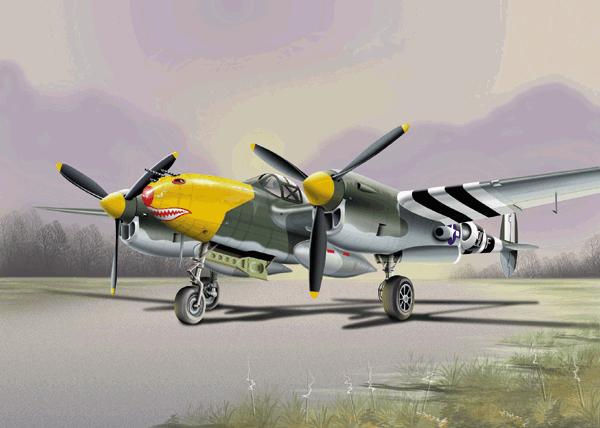 |
|---|
| The 370th Fighter Group formed on 25 May 1943 and activated on 1 Jul 1943. The Ninth AF, equipped with P-47s and then P-38s in Feb., trained until May 1, 1944 when the group entered combat. They dive-bombed radar installations and flak towers, and escorted bombers that attacked bridges and marshalling yards in France as the Allies prepared for the invasion of the Continent. |
| P-38 Lighting USAAF, 485th FS-370th FG. |
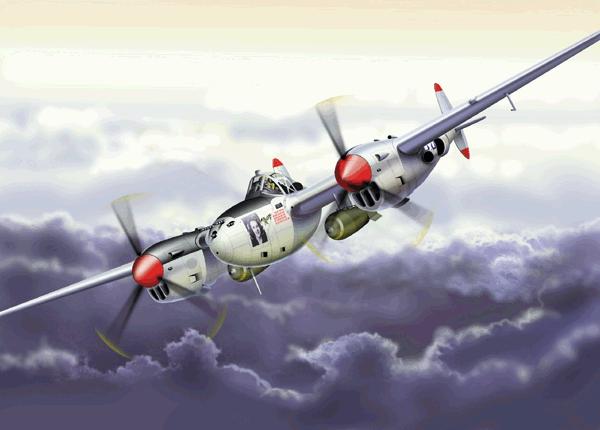 |
|---|
| Richard Bong was America’s all-time leading fighter ace. He held the US record of forty victories in combat. In San Francisco Richard Bong looped-the-loop around the Golden Gate Bridge. He then buzzed Market Street in his Lightning and waved at the stenographers staring in astonishment out of office windows. Though General Kenney had given him a stiff talking to, he knew that Dick Bong had the makings of a first-rate fighter pilot. At the age of 24, Major Richard I. Bong lost his life in the fiery crash of a P-80 jet he was testing for the Air Force On August 6, 1945 (the day the B-29 Enola Gay dropped an atomic bomb on Hiroshima.) |
| P-38 Lighting USAAF, 5th AF, 9th FS-49th FG. Richard Bong. |
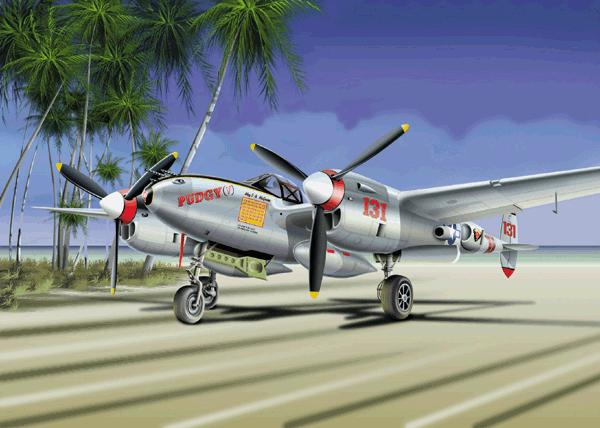 |
|---|
| Major McGuire scored 38 aerial victories in a P-38, making him our nation's second highest scoring ace. Among his many decorations was the Medal of Honor awarded for his actions on December 25-26, 1944 when he shot down seven enemy aircraft. On January 7, 1945, he crashed to his death on Los Negros Island in the Philippines while risking an extremely hazardous maneuver at low altitude in an attempt to save the life of a comrade. McGuire Air Force Base in New Jersey is named in his honor. |
| P-38 Lighting USAAF, 5th AF, 431 FS-457 FG, Maj. Thomas B. McGuire. |
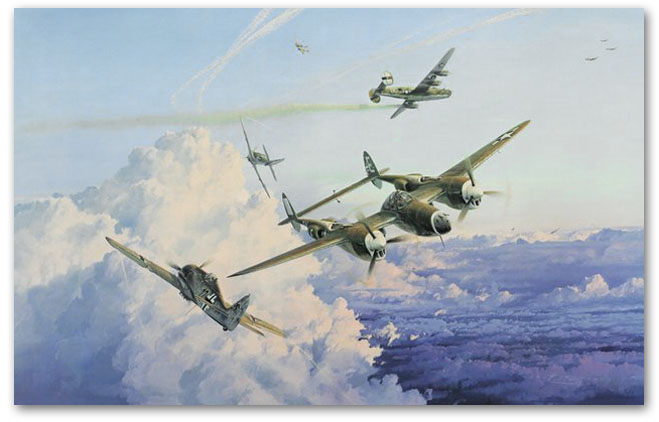

and we're checking it twice.
Anyone who doubts that Iraq is not an integral part of the war on terror is a fool. The Dems may be too stupid to understand, but Libya and Iran seem to be getting the message.
That's a scary thought, a bunch of people stuck in the 11th century are smarter than our Liberals.

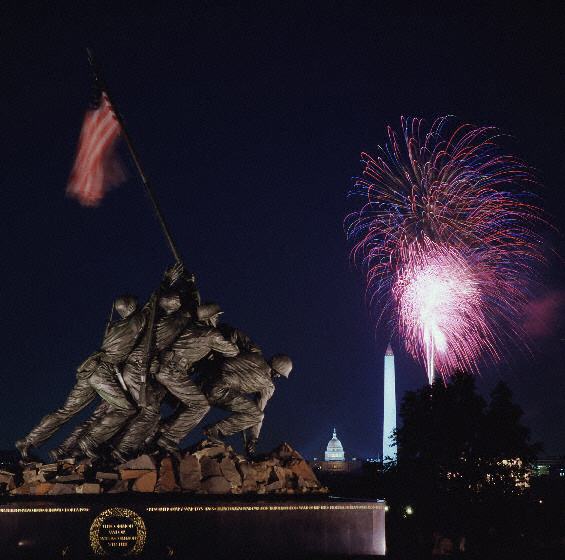
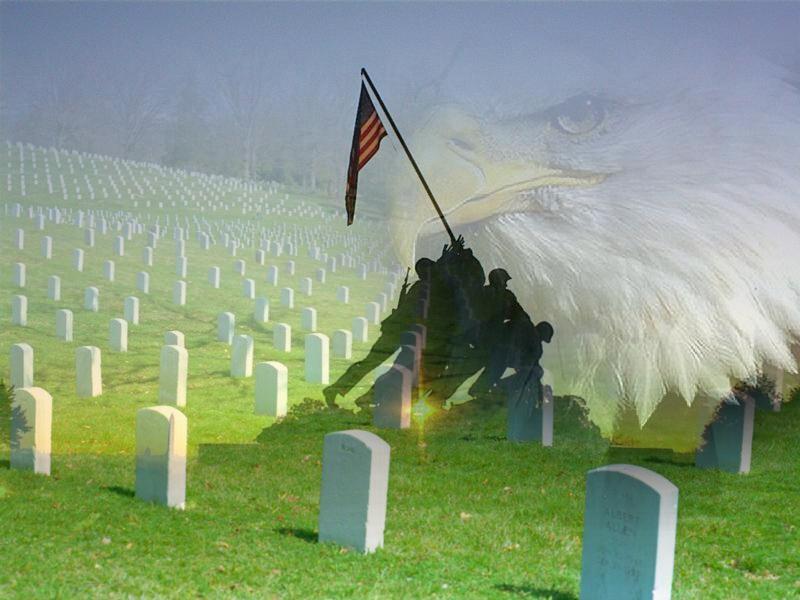
Disclaimer: Opinions posted on Free Republic are those of the individual posters and do not necessarily represent the opinion of Free Republic or its management. All materials posted herein are protected by copyright law and the exemption for fair use of copyrighted works.